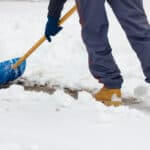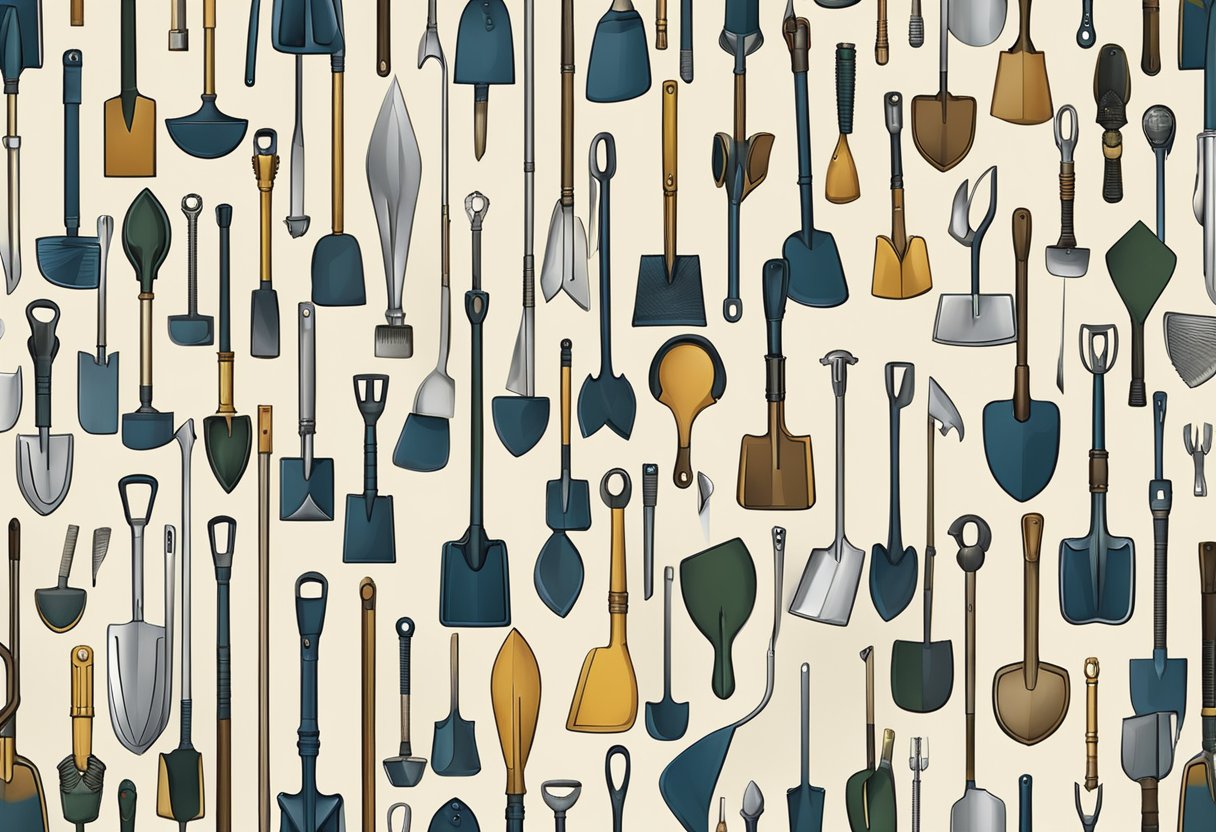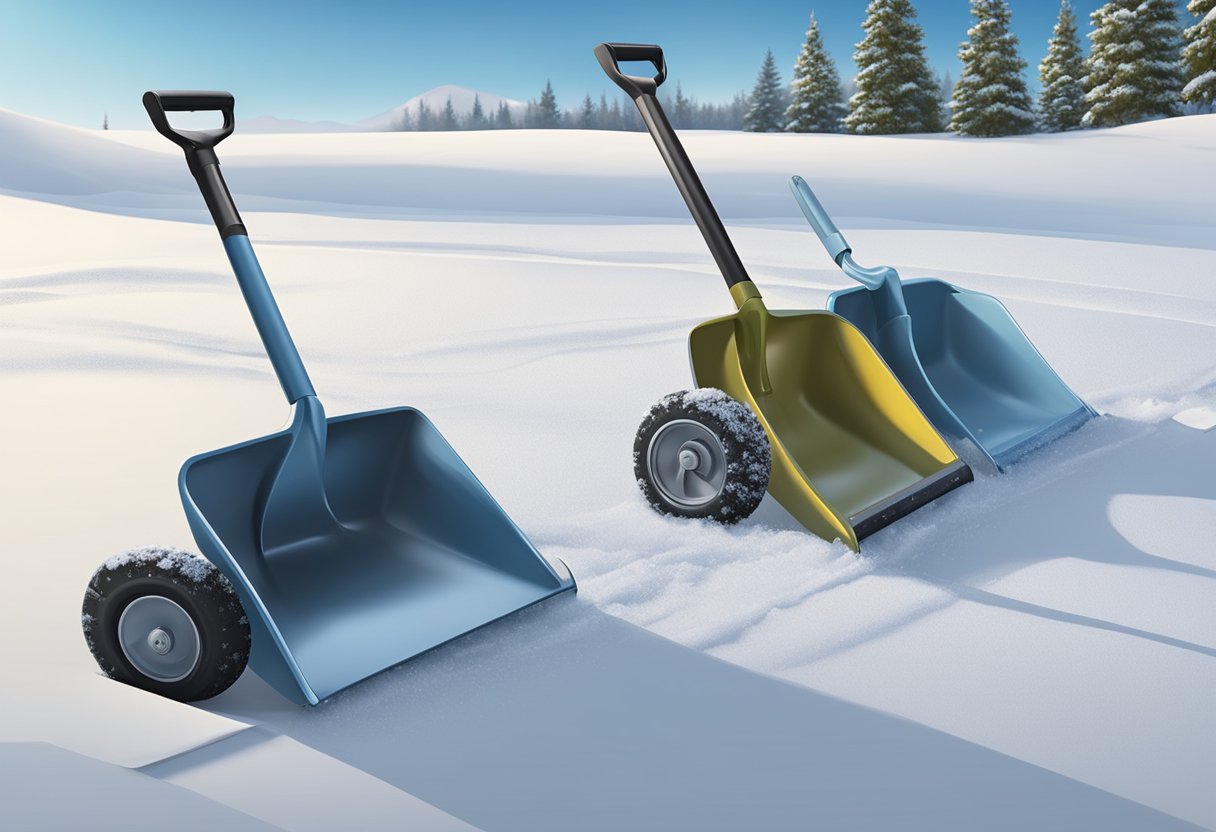When digging in any soil, it is good to know the composition of the ground before attempting to attack it with your shovel. Some soils are easier to dig in when wet, like sand, while others benefit from being lightly moistened to make digging more manageable, such as rocky or hard soils.
Below is our Quick Reference Chart followed by an explanation as to the rating for each soil type.
Table of Contents
Wet Soil Digging – Quick Reference Chart
| SOIL TYPE | DIFFICULTY TO DIG WHEN WET (1=EASY, 5=HARD) | DIFFICULTY TO DIG WHEN NOT WET (1=EASY, 5=HARD) | TO ADD WATER OR NOT | ISSUE |
| Clay Soil | 1 | 5 | NO | STICKS AND CLINGS TO TOOLS |
| Rocky Soil | 3 | 5 | YES | HELPS TO LOOSEN LARGE CHUNKS OF ROCK |
| Sandy Soil | 1 | 5 | YES | DRY SAND HARD TO CONTROL |
| Sand | 1 | 5 | YES | RETAINS HOLE SHAPE CREATED |
| Hard Soil | 3 | 5 | YES | SOLID STATE IS LOOSENED |
| Gravel | 1 | 1 | NO | GRAVEL DOES NOT HOLD WATER |
Wet Clay
Wetting clay soil does not make it easier to dig in than dry clay. While clay soil is difficult to dig in, whether wet or dry, dry clay tends to be slightly easier to work with because you can break the clay up into more manageably sized clods. No matter what, you have your work cut out for you if you attempt to dig in clay soil.
Wet clay is very sticky and dense, making it very heavy to work with any digging tools as it clings on. Additionally, shovels and other digging tools and your boots can get stuck in wet clay. Finally, tools can be challenging to remove as the clay will act as suction and may further trap your tool’s blade rather than make it easier to use.
Rocky Soil
Wetting rocky soil may make it easier to dig in, but only if you apply water lightly. When the surrounding dirt is dry, it sticks to the stones and cements them into the ground, so lightly wetting can help your digging efforts. By adding too much water, you could muddy the ground, doing more work. However, it can help loosen large chunks of rock in the soil if wetted lightly.
Wetting the soil will make it slightly heavier but prying rocks from moistened soil is far easier than dry soil. This technique is beneficial if you strictly work with hand tools like a shovel instead of power tools or an excavator, giving you more help with the physical labor.
Sandy Soil
Sand and sandy soil is much easier to dig in when wet as the moisture compacts the sand and allows the particles to stick together. So, if you are digging a hole in the sand or sandy soil, make sure it is wet because wet sand will retain the shape you dig.
When you dig in dry sand, the particles will slip and slide off your shovel blade as if you were trying to balance thousands of ants, never knowing which direction they are going. Even though wetting sandy soil may make it slightly heavier to work with, it is much easier to dig in than dry sandy soil.
Hard Soil
Working with hard soil is similar to working with rocky soil. If you lightly moisten hard ground, it becomes easier to work with than dry hard soil. However, do not overwater or the hard soil will get soggy and become mud. Ironically, hard ground is created when soil becomes compacted due to moisture and then dries out.
When hard soil is completely dry, there is little air trapped between the particles, which cause it to solidify, sometimes as hard as cement or brick. By applying a little bit of water, the soil can be loosened up and easier to work with rather than in its completely solid state.
Gravel
Since gravel is composed of small chunks of lightweight rock, it doesn’t matter if it is wet or dry when digging. Adding water to gravel may make it slightly heavier, but gravel does not retain water like other soils. Adding moisture also doesn’t make it easier to dig in because water cannot loosen gravel particles. However, gravel does contain a lot of dust once you begin digging into it, and this is where lightly adding water to the rock may help keep the dust down. Keeping the dust down keeps you safer when digging as you can see things around you clearer.
If you need to dig in gravel, it is just as easy to dig in when it is wet or dry. The only conditions that may make gravel more challenging to dig in are the addition of another medium such as sandy soil or dirt or if the rock is iced over due to frigid temperatures.
Final Thoughts
Digging in wet dirt can be bad for the ground and plants as the air pockets in the soil are eliminated. Air can then not reach the roots of your plants, which creates an environment for bacteria. Plants do need water, but they need air as well, and it is a good practice for the soil to dry out between the watering of plants. Also remember to loosen any wet soil you have dug up to create air pockets for your plants health.
However, if the area you are digging in is to lay bricks, then wetting the soil may be what you want to do so that the ground is denser, allowing you to apply your pavers easily. Take a look at our shovel guide Square Mouth Shovels Use to learn how valuable this shovel will be in your digging plans.
No matter what, you should determine your soil composition before digging to see if you should water it first to make your job a bit easier.






